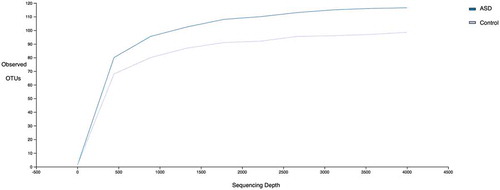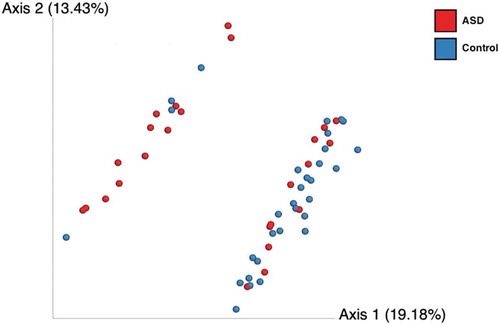Figures & data
Table 1. Socioeconomic characteristics and early life history of children with autism and neurotypical controls.
Table 2. Comparison of BMI and blood biochemical parameters between children with autism and neurotypical controls.
Table 3. Mean intake of nutrients of children with autism and neurotypical controls.
Table 4. Food habits and gastrointestinal symptomatology of children with autism and neurotypical controls.
Table 5. Comparison of serum cytokine concentrations of children with autism and neurotypical controls.
Figure 1. Alpha Diversity comparison of observed OTUs between ASD and control children. Numbers of observed OTUs on the Y axis and multiple rarefied sequences depth on the X axis. Statistical differences using t-test (P<0.001).



